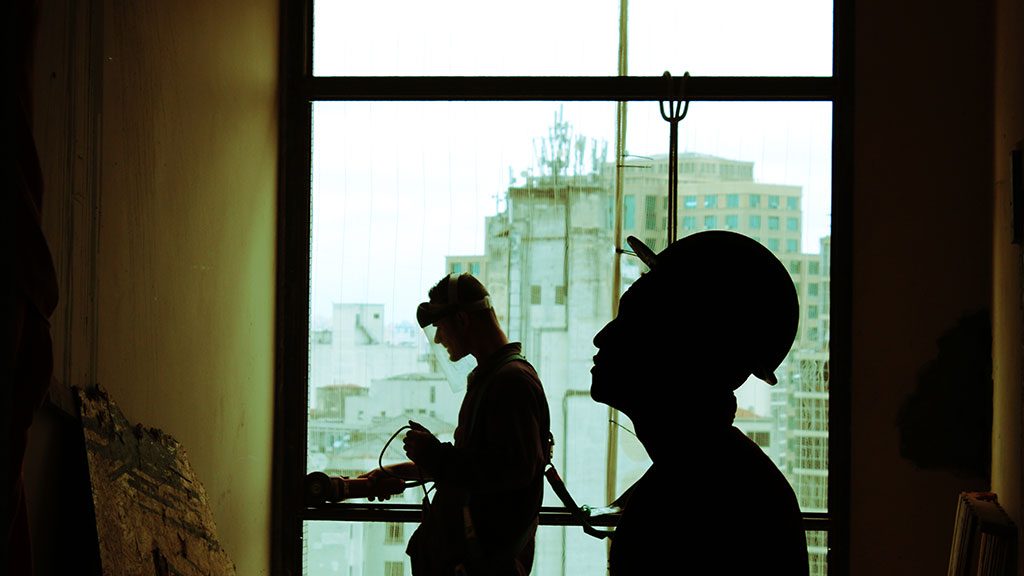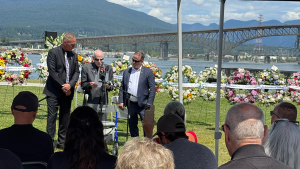Construction stakeholders in Ontario are calling for a “pause” to regroup and refocus on safety after the sector suffered five deaths at four jobsites over seven days.
John Martens, 21, of Langton, and Henry Harder, 26, of Tillsonburg, died as a result of injuries suffered when a four-storey building under construction in London collapsed on Dec. 11. Andrew Orfanakos, 48, of Newmarket, was killed Dec. 14 while working on a construction site at Widmer and Adelaide streets in Toronto. An as-yet unidentified worker died Dec. 15 when crushed by a slab of concrete at an Ontario Tech University jobsite in Oshawa. And the afternoon of Dec. 17, a traffic signaller at a construction site in the Toronto suburb of Scarborough was struck and killed by a motorist.
On Dec. 17 the Infrastructure Health and Safety Association (IHSA) issued a call to action supported by the chairs of IHSA’s board and its various committees, urging the sector to “take a moment and pause for safety. Please pause all work for a safety moment and re‐establish a commitment to the prevention of injuries, illnesses and fatalities.”
The Ontario General Contractors Association (OGCA) has issued a similar plea and Carmine Tiano, director for occupational health services for the Provincial Building and Construction Trades Council of Ontario, also suggested a reset.
Investigations continue
Tiano, OGCA president Giovanni Cautillo and IHSA president and CEO Enzo Garritano each prefaced their remarks by saying they did not want to speculate on the causes of the fatal mishaps. The Ministry of Labour, Training and Skills Development is investigating the incidents.
“I don’t know if it’s because of COVID burnout, or people heard that there’s a vaccine so they let their guard down a bit, or just the fact that we’re rushing to finish things for the end of the year and spend time with their families. I’m not quite sure what it is, but I think everyone’s overloaded,” said Cautillo.
The pause should be in the form of daily toolbox talks, an opportunity to take a moment of silence for those who have died, said Cautillo.
“Focus on those people and their families, and make sure your thoughts and prayers are with them. And then, internalize that focus, and realize that safety is the most important thing for everybody because as one big family we all want everyone going home at the end of the day.”
The IHSA letter to the industry stated, “With efforts focused (rightfully) on the topic of COVID‐19, including its impact on our personal lives, upcoming holidays, increased levels of spread, and the rollout of the vaccine to fight this coronavirus, it is understandable how attention can be diverted from everyday risks and hazards in the workplace.
“It is up to all workplace parties to work even harder to increase attention to performing work in the safest manner possible.”
Garritano reiterated, “That’s what our letter is about, pushing the pause button to refocus and recommit to getting home safely from the risks that are faced every day on site, knowing that there are potentially some distractions out there, and those distractions are mainly probably from COVID.”
Productivity concerns
Tiano suggested with COVID affecting workplace productivity, and a drive to get work done before the holidays, there is pressure to work long hours. He referred to the swing stage incident of Christmas 2009 where it was revealed the project was behind schedule. Four workers fell to their deaths.
“I always thought personally that since COVID happened, maybe it would have been good for any government project, or projects in general, not to keep timelines so strict,” he said. “It would be fine if it’s going to take an extra 30 days, a couple of extra months.
“Again, very important, I’m not saying any of this happened in any of these three situations. But generally, these are things that all of us should be asking.”
Hours of work should be looked at, Tiano said, citing an anecdote where an acquaintance of his, a construction worker, had been working 90 hours a week.
“What are the health effects on the person, coworkers, what does it mean for accidents?” he asked.
“Take the foot off the gas. Everybody has a breather, you reinforce your protocols, you make sure things are going the way they should. And then you can just regroup and move forward.”
Follow the author on Twitter @DonWall_DCN.











Recent Comments